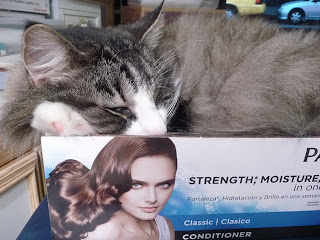Come into my Gingerbread House!
The last time I was here, I wrote about one of my Millefiori Brazilian dimensional embroidery designs, "Gingerbread House".
Today, I think it would be fun to tell you about some of the stitches I used.
Everything I do when I'm designing is based on about a half dozen basic Brazilian embroidery stitches -- the bullion, cast-on, drizzle, knot, lazy daisy, etc. The only difference is that I get adventurous every so often and see how far I can take my needle and floss.
See those pinwheel lollipops? They are just drizzles. I made two drizzles in two colors and then looped them around the center, tacking one side to the fabric.
The gumdrop "stands" for the lollipops are made with colonial knots (I prefer the colonial to the French knot just because it's more dimensional. But, hey! I'm flexible.), and the cuppy cake has a chocolate bullion paper. The bright pink #131 frosting is made with a cotton floss bullion beneath (for padding - often in the same color that I'm using on top) using long and short buttonhole stitch. The maraschino cherry on top is simple satin stitch, and the stem is stem stitch.
Because I stitched this design on white fabric, I chose the palest turquoise blue (EdMar #224) for the snow lines and also for the snowman to show contrast. It wouldn't be any fun to stitch a white snowman on white fabric. It would look like he has just melted away! Here's Frosty the Marshmallow:
He is stitched with Cire.
Here are candy canes, jelly beans and ribbon candy:
When I was stitching these delectable little jelly bellies, I went through my floss stash and pulled out only the most delicious candy colors. The jelly beans are simple satin stitch, too, each stitched in a different direction.
For the ribbon candy, I used two strands of Iris threaded into the same needle. When you look closely, you'll see that these are separate twisted lazy daisy stitches, one pointing north and the stitch next to it pointing south. Yes, I was pretty surprised myself that such a simple stitch made realistic ribbon candy. For sure!
More jelly beans are used to make the chimney. The ruffle at the top is a cast-on stitch with a row of detached buttonhole stitches added. And the peppermint sticks are made with red and white bullions -- one strand of red Iris and one strand of white Iris threaded into the same needle. Sometimes the floss colors aren't evenly distributed. This is easily fixed by tugging one color strand of floss or the other to even out the colors.
Oh, let's see -- what else did I entertain myself with? Oh, yes - the roof:
The brown roof is satin stitched, and the stitches are uniform from tip to gutter because stitches at the "top" or outside edge are close together and along the bottom, they are slightly apart. You can't tell - it's an optical illusion. I learned about keeping satin stitches spaced nicely from one of Erica Wilson's books, Needleplay. (...and what a gift she left to embroiderers everywhere! Her needlework stitch books are loaded with helpful hints and tips and are recommended for all stitchers, whether you are doing Brazilian embroidery or not.)
I used a variegated light pink/light yellow for the bullions (pink shingles?), and the eaves are scalloped with cast-on stitches. I added a row of detached buttonhole stitches using a white metallic DMC craft thread (from JoAnn Stores - in the craft section, on a spool). DMC metallics (skeins) would also work well.
The candy mint trimmed windows are satin stitch and the "curtains" are cast-on stitches made with lemon drop yellow.
Bright fuchsia Cire was used to stitch the cotton candy clouds. To make the clouds, you'd start with a row of stem stitch or outline stitch. Next, make a really loose detached buttonhole stitch (or two) in each base stitch, but before you to on to the scond stitch, make another detached buttonhole stitch in the loop just made, but pull it snug. I call this a "Locking Buttonhole Stitch" and it keeps long loopy stitches in place. I think I used #083 to stitch these clouds -- it's a shaded color, so I could use the darker part for the "underside" of the clouds and the sun could shine happily on the top or bright side.
Here are the evergreen trees:
You can see that they are also very simply made with double cast-on drizzle stitches --not too many, because I didn't want to hide the Snowmallow. I added a stitch that I developed -- Star-Fill, the Five-Point Star Filling Stitch -- at the top. This stitch is made just like the stars we learned to draw in grade school.
There are lots of choices for finishing this adventurous little delicacy. I used an 8" frame and tucked in a row of fancy rick-rack trim instead of matting the piece:
A shadow box could also be selected, and these are easy to find now because of the popularity of scrapbooking. You could add little "bead or button" snowflakes from the top of the frame, add little ornaments or reindeer or silk flower greenery inside the shadowbox, or you could trim the outside of the frame. You could even substitute beads for any of the elements of this embroidery. There are no limits - whatever you think up, you can try.
Just remember to look at your embroidery design and think about what ELSE you can do to make it your own truly unique creation. That's the fun of doing Brazilian dimensional embroidery. You can do ANYthing, and you can ADD anything. But mostly, you can just have a LOT of fun.
Rosalie

















































